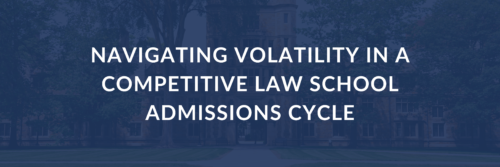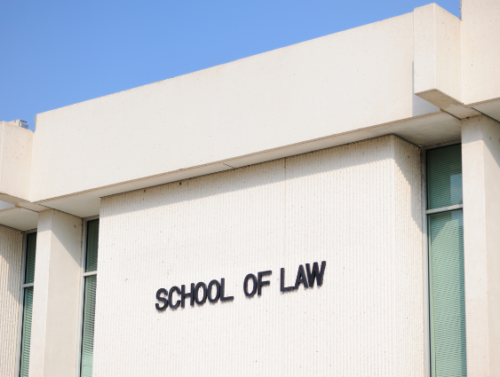
Applications to law schools have surged this cycle. Tailwinds from a contentious election, a sputtering job market for young professionals, changes to the LSAT, and even the success of legal dramas in popular media (see Suits and The Lincoln Lawyer on Netflix) have turbocharged interest in the legal profession. According to the Law School Admission Council (LSAC), year-to-date applicants for the 2025 cycle are up 20.4% compared to the previous year and 26.0% compared to two years ago.
Although applications in every geographic and score band are up, the gains are far from equally distributed. As of March 2025, the highest score bands (above 165) and the Northwest, Northeast, and New England regions have the highest growth in applicant volume on a percentage basis.
Strategic Opportunities for Law Schools
With more applicants, law schools find themselves in an advantageous position where they may have opportunities to lower their discount rates, increase their academic medians, or in some cases, do both. However, the strategic choices schools make should align with their previous admissions cycles and long-term institutional goals.
Schools that aggressively pursued median increases during the pandemic may now prioritize strengthening their financial position, while others might view this as an opportunity to improve their rankings. The key is developing a comprehensive approach to aid leveraging that balances immediate gains with long-term institutional health.
Three Key Areas for Strategic Aid Leveraging
As we advise law schools on the strategic considerations that must go into developing a comprehensive approach to aid leveraging in a volatile admissions cycle, we have identified four areas of inquiry as key factors in thoughtful goal setting.
- Assess the Competition in Your Market Segment and Rankings Band
Understanding the competitive landscape is crucial for effective aid leveraging. Law schools should assess the competition within their market segment and rankings band to determine how to optimize their position. Valuable data sources include:
- Overlap data from LSAC and Unite
- Anecdotal applicant feedback and surveys of non-matriculants
- Aggregated applicant data from platforms like lsd.law
These resources provide real-time insights into competitor actions and help determine the feasibility of various strategies.
- Understand Downstream Yield Shifts from Changes in the Applicant Pool After the Removal of Logic Games from the LSAT
The removal of Logic Games from the LSAT has significantly altered applicant demographics. Schools we have worked with report a notable increase in the average age of applicants, suggesting a “pent-up demand” effect:
- College graduates from the past decade who previously avoided the LSAT due to the Logic Games section are now entering the applicant pool
- These opportunistic applicants may have different motivations and commitment levels
- Law schools should carefully monitor how these demographic shifts might affect yield rates, enrollment decisions, and long-term retention
- Contextualize Election-Year Application Trends
Election years historically coincide with fluctuations in law school application volumes:
- Contentious presidential elections that highlight policy debates and rule of law issues often drive application surges
- Today’s legal landscape, where policy controversies are frequently resolved through litigation, may attract applicants who see legal careers as pathways to influence
- Admissions offices must understand these motivational factors and how changing student demographics might affect the institutional culture and community and career aspirations of different demographic groups
- Balance Short-Term Metrics with Long-Term Success
While strategic and quantitative approaches to admissions and aid leveraging are crucial for attracting desired students, law schools must maintain a long-term perspective. Pursuing one-dimensional metric increases might seem straightforward, but holistic student evaluation remains valuable. Excessive focus on short-term success metrics could undermine long-term outcomes related to:
- Bar passage rates
- Career placement success
- Overall student experience
- Community culture and institutional reputation
Conclusion
There is no magic formula for success in law school strategic positioning. Strategies must be considered for their short- and long-term impacts. This volatile and uncertain cycle presents opportunities for law admissions offices to pursue higher medians or lower discount rates, both of which can improve ranking performance in the short term but come with long-term impacts as well. The most successful schools will achieve their goals by thoroughly understanding current market dynamics and building diverse classes that foster a strong community that lasts beyond this year. By balancing strategic aid leveraging with holistic admissions practices, law schools can navigate this cycle while maintaining their long-term institutional vision while capitalizing on current opportunities.
Our Aid Leveraging Series: This is our second of a series of four pieces focused aid leveraging across various student populations. Our first focused on the undergraduate student population, and this piece will be followed by one on medical students, and then MBAs.
